espionage
The Latest Biden/Harris ‘Lawful Pathways’ Scheme: Declare Latin American Migrants to Be ‘Refugees’
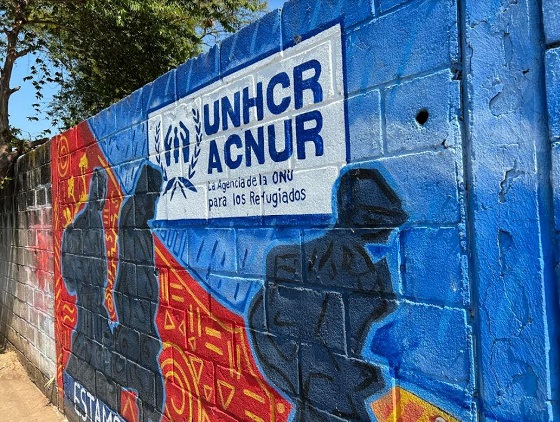
From the Center For Immigration Studies
By Todd Bensman
Thousands flying in who would not have qualified as refugees in the past
Almost sight unseen and scarcely noticed by the American public, the Biden/Harris administration’s Department of Homeland Security has super-charged yet another “Lawful Pathways” program to admit tens of thousands of people from Latin America who they claim would otherwise have crossed the border illegally.
It’s called the Safe Mobility Office Initiative (SMO), Movilidad Segura in Spanish, jump-started in May 2023 and its capacity expanded this spring. The SMO initiative uses the U.S. refugee resettlement system in a historically atypical way that some critics see as abusive to fly in tens of thousands of people from nationalities the United States has very rarely regarded as warranting refugee resettlement in recent decades — in record numbers and in record-fast time, a CIS examination and analysis of the new program shows.
(See my colleague Nayla Rush’s discussion of the SMO initiative in the context the Biden/Harris administration’s broader remaking of the refugee resettlement program.)
From storefront “offices” set up in Ecuador, Colombia, Costa Rica, and Guatemala, U.S. Citizenship and Immigration Services (USCIS) personnel and United Nations proxies have granted refugee status to at least 21,000 people from seven Latin America countries in the first year of the program, as of May 2024, some half of them having already arrived, a White House fact sheet reports. (Canada and Spain also take part in the SMO initiative, and several thousand additional people were approved for resettlement in those countries.) The newly minted refugees were Haitians, Venezuelans, Nicaraguans, Cubans, Guatemalans, Ecuadorians, and Colombians. Data not yet in will likely show greater numbers through June and July because, in May, the Biden administration expanded the SMO program to add Hondurans and Salvadorans for a total of nine nations whose citizens can now be considered for U.S. refugee status.
Historically, the U.S. bestows the highly desired refugee status on grounds that recipients credibly claim they cannot return home due to a “well-founded fear” of persecution on the basis of race, religion, nationality, political opinion, or membership in a particular social group, according to USCIS, whose personnel are staffing the SMO foreign offices in partnership with the United Nations High Commissioner for Refugees (UNHCR) and other UN agencies.
The offer of refugee resettlement brings with it an interest- and penalty-free flight loan backed by U.S. taxpayers, followed by a broad assortment of U.S. resettlement aid and welfare benefits, and a quick path to permanent residence and U.S. citizenship, all very difficult to legally reverse.
A March 2024 Mixed Migration Centre survey of SMO users shows the vast majority, 90 percent, want to travel to the United States for economic opportunities and better living standards rather than to flee war or persecution.
The 21,000 approved for resettlement as of May are a harbinger of even greater number of “refugee” classifications of essentially economic immigrants in Latin America. Tens of thousands more were in the pipeline to fill the administration’s historically high refugee allocation for the Latin America region, from less than 5,000 to an unprecedented 50,000 in 2024. More than 190,000 had registered for those 50,000 slots by the end of May, although many may be declined and referred by the SMO offices to other “lawful pathways”, such as family reunification visas, labor programs, or the legally dubious parole programs.
“Working closely with international organization partners, we are building capacity, running extensive messaging campaigns, and exponentially increasing the number of people who receive information or services via the SMOs,” Marta Youth, the principal deputy assistant secretary for the State Department’s Bureau of Population, Refugee and Migration testified before a congressional committee in March: “In the refugee pathway, we aim to resettle between 35,000 and 50,000 individuals in Fiscal Year 2024, an historic and ambitious goal that would amount to an increase in refugee resettlement from the Western Hemisphere of over 450 percent from last year.”
This sharp departure from traditional operation of the U.S. Refugee Admissions Program (USRAP) — essentially handing out of refugee approvals to those usually regarded as economic migrants looking to work in the U.S. — is explained by the administration’s public justification: to divert the recipients from planned travel on dangerous migrant trails en route to illegal U.S. Southwest border crossings from Mexico.
That rationale for the expansion of “refugee” resettlement from Latin America comes in an election year in which a mass illegal immigration border crisis figures as a top problem among voters.
“The Safe Mobility initiative is one of the many ways the United States is facilitating access to safe and lawful pathways from partner countries in the region at no cost, so refugees and vulnerable migrants don’t have to undertake dangerous journeys in search of safety and better opportunities,” one State Department release explained last year.
The administration’s justifications for its newfound generosity of refugee status handouts strikes some familiar with USRAP as one of several deviations from operational norms, for short-term political purposes, indicating misuse or even abuse.
Elizabeth Jacobs, a former USCIS attorney and now the Center for Immigration Studies’ director of regulatory affairs and policy, told me the Biden administration’s goal is to serve the short-term political purpose of reducing the appearance of border congestion in an election year. That comes at a steep price, she said.
“This new program is consistent with the Biden administration’s overall strategy to obscure the border crisis from the American public, but not actually reduce the entries of inadmissible aliens to the United States,” Jacobs said. “There are winners and losers to nearly all immigration policies. The losers, here, are the aliens abroad who meet the statutory criteria for refugee status and are in actual need of resettlement.”
One of a Trio of Programs Enabling Invisible Immigration
The Safe Mobility Offices program is actually the third initiative in a broader Biden administration policy strategy of addressing the bad publicity caused by mass illegal border crossings that surpassed nine million in just the first three years of the Biden administration.
The SMO works in concert with two other major “lawful pathways” programs that, between the pair, have paroled into the country on “humanitarian” protection grounds more than one million inadmissible economic immigrants since 2022 who otherwise would supposedly have staged the politically problematic illegal border crossings the administration now wants to reduce.
One of those programs has admitted more than 500,000 inadmissible aliens from 100 countries on two-year renewable but legally challenged “humanitarian parole” permits granted through the “CBP One” mobile phone app. These hundreds of thousands were admitted into the United States at eight U.S.-Mexico land border ports of entry. (See: “New Records Unveil Surprising Scope of Secretive ‘CBP One’ Entry Scheme”.)
The other humanitarian parole program has rechanneled from presumed border crossings another half-million inadmissible aliens by pre-authorizing mostly Cubans, Haitians, Nicaraguans, and Venezuelans to fly commercial from 77 countries into 45 international U.S. airports, ostensibly as humanitarian rescues. (See “New Data: Many Migrants in Biden’s ‘Humanitarian’ Flights Scheme Coming in from Safe Countries and Vacation Wonderlands”.)
At least 75,000 per month are still entering through just these two ad hoc, congressionally unauthorized, and politically controversial admission programs.
Those two cousin programs have drawn some controversy, opposition, and calls by Republican presidential nominee Donald Trump to end at least the flights program after the Center for Immigration Studies forced the Biden administration to reveal details through a Freedom of Information Act lawsuit.
But the SMO program is far less known and, probably as a result, has yet to draw similar critiques. Those rejected for refugee status might well be referred to the land and air parole programs.
Nayla Rush, senior researcher for the Center and its refugee policy expert, told me current approvals for refugee status warrant questioning as to whether recipients are eligible.
“They want to bring people from Central America as refugees to decrease illegal entry when we are supposed to be bringing people in who are the most vulnerable,” Rush said. “Are we admitting the most vulnerable, those in real need of resettlement, or is it another policy or diplomatic move undertaken by the Biden administration to address the ‘root causes’ of immigration in the region?”
Deviations from the Norm
Historically, the U.S. State Department and USCIS have reserved refugee resettlement mainly for those fleeing active war zones or violent political upheavals in home countries.
Top nationalities over the two decades have featured people from war-torn Afghanistan, the Democratic Republic of Congo (DRC), Iraq, Bhutan, Syria, Somalia, and some republics of the former Soviet Union, according to published government data. In the last 10 years, Burma, DRC, and Iraq were the nationalities most often granted refugee status.
By contrast, refugee grants in Latin America have long been scant or even nonexistent for decades right up until this year.
From 2002 to 2022, for example, the U.S. has granted refugee status to comparatively tiny numbers of Haitians (49), Nicaraguans (7), Venezuelans (183), Colombians (3,638), and Guatemalans (1,322), albeit sometimes more to Cubans (46,600, due to unique diplomatic considerations).
Most are already safely resettled in third nations, such as Haitians in Chile and Brazil, and were long regarded as not warranting special U.S. protection. Only four Haitians, for instance, were granted refugee status between 2012 and 2022. The U.S. granted only 173 Venezuelans refugee status during that time, few even in the years following that country’s 2017 economic collapse that sent more than seven million of them into 15 nearby countries.
Now, a seemingly great urgency powers approvals of Venezuelans in unprecedented numbers and in record time.
Most SMO applicants are Venezuelans who have been living for years safely and often prosperously in Colombia and Ecuador, hardly refugee material. (See Video: “U.S. Enabling Mass Asylum and Humanitarian Permit Fraud”).
UNHCR screens them all and makes referrals to USCIS adjudicators in the SMO storefronts. On average, the offices were processing some 8,000 cases monthly, including 3,000 at just one local SMO office in Bogota, Colombia, according to a University of Wisconsin policy brief titled “Year One of Safe Mobility Offices in Colombia”.
Of the 3,000 a month whom UNHCR refers to the local SMO office in Colombia, the U.S. government approves 95 percent for refugee resettlement, the university’s brief reported.
Many tens of thousands are Guatemalans and Nicaraguans, who have not suffered war in decades, are registering, too.
A State Department spokesman told CBS News in late May that Safe Mobility Offices in mid-May had “enabled a six-fold increase in the number of refugees resettled from the Western Hemisphere”. In the first half of FY2024, October 2023 through March 2024, more refugees from Latin America and the Caribbean were admitted (8,518) than in any previous full year.
In addition to the oddity of bestowing refugee status on those long regarded as ineligible economic migrants is the speed at which U.S. authorities are processing them. This is perhaps the fastest refugee processing in program history.
“In Just Nine Days!” Breaking Speed Records? Approvals for refugee resettlement, which include security vetting and needs assessments, often took an average of between 18-24 months or even longer. USRAP had already been using technology to reduce processing time for many to as short as six months, Nayla Rush has reported.
But the boasted “expedited” process for Latin Americans seems to be breaking all records.
“USCIS in Colombia processes refugee resettlement applications in only 9 days!” boasts a sub headline in the University of Wisconsin’s policy brief about the first year of SMO. Final arrangements for transportation afterward may require another month or two.
In Colombia and elsewhere where SMO offices are operating, the Associated Press has reported, traditional refugee screening has gone from a “yearslong effort” to “only months”.
“These refugee applicants undergo the same rigorous and multi-layered interagency screening and vetting process as all other refugees and, if eligible, most will arrive in the United States in just a matter of months,” the State Department’s Marta Youth testified.
Free Taxpayer-Backed Airfare?
The previously off-limits U.S. refugee status is especially appealing to Latin Americans because, in addition to providing beneficiaries with a bonanza of U.S. resettlement assistance and a path to U.S. citizenship, the State Department offers interest-free “travel loans” for airline tickets that can exceed $10,000 for families. There is no penalty for failure to pay.
The “loan” program was first set up in the 1950s to help people escape Eastern European Communist countries and is used to help refugees travel in from all over the world. Today, the UN’s International Organization for Migration administers the money on behalf of the State Department, and non-governmental resettlement agencies collect the payments, for commissions of up to 25 percent, according to the New York Times and other reports.
But repayment and loan default rates remain a public mystery, as the State Department under several past administrations has never willingly published this information. In response to litigation by Judicial Watch seeking the default and repayment information for 2016-2017, the State Department asserted that it did not track the information. At the time, Judicial Watch cited a private review of records provided by a whistleblower showing that from 1952 to 2002, IOM issued $1,020,803,910 in loans and had recovered only about half of it.
Under the Biden administration, the State Department has continued its resistance to releasing the information. It has ignored a Center for Immigration Studies Freedom of Information Act request for default rates and a 2022 information request by a dozen Republican members of Congress led by Rep. Lance Gooden (R-Texas).
The Immediate Future
The future of these programs hangs in the balance of the upcoming presidential election. Donald Trump, the Republican nominee, has promised to reverse all of Biden’s border-related immigration policies, and this one would likely not escape the Republican’s hatchet. While a Trump administration likely cannot legally reverse refugee grants, it can quickly return USRAP to its prior norm of focusing on higher-priority populations suffering actual war and persecution in their homelands.
But should another Democrat win office, such as Vice President Kamala Harris, expect further expansion of the refugee program in Latin America, as well as the other two humanitarian parole programs. I expect further increases in the Latin America refugee allocation beyond 50,000 to meet the far greater demand for its benefits, as well as more SMO offices in both existing countries and new ones in Latin America. And skyrocketing taxpayer burdens for all of it, on both sides of the American border.
The author would like to thank Eric Gordy for his research assistance.
Energy
China undermining American energy independence, report says
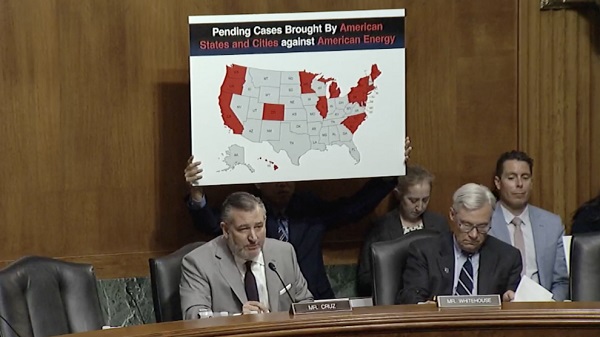
From The Center Square
By
The Chinese Communist Party is exploiting the left’s green energy movement to hurt American energy independence, according to a new report from State Armor.
Michael Lucci, founder and CEO of State Armor, says the report shows how Energy Foundation China funds green energy initiatives that make America more reliant on China, especially on technology with known vulnerabilities.
“Our report exposes how Energy Foundation China functions not as an independent nonprofit, but as a vehicle advancing the strategic interests of the Chinese Communist Party by funding U.S. green energy initiatives to shift American supply chains toward Beijing and undermine our energy security,” Lucci said in a statement before the Senate Judiciary Subcommittee’s hearing on Wednesday titled “Enter the Dragon – China and the Left’s Lawfare Against American Energy Dominance.”
Lucci said the group’s operations represent a textbook example of Chinese influence in America.
“This is a very good example of how the Chinese Communist Party operates influence operations within the United States. I would actually describe it as a perfect case study from their perspective,” he told The Center Square in a phone interview. “They’re using American money to leverage American policy changes that make the American energy grid dependent upon China.”
Lucci said one of the most concerning findings is that China-backed technology entering the U.S. power grid includes components with “undisclosed back doors” – posing a direct threat to the power grid.
“These are not actually green tech technologies. They’re red technologies,” he said. “We are finding – and this is open-source news reporting – they have undisclosed back doors in them. They’re described in a Reuters article as rogue communication devices… another way to describe that is kill switches.”
Lucci said China exploits American political divisions on energy policy to insert these technologies under the guise of environmental progress.
“Yes, and it’s very crafty,” he said. “We are not addressing the fact that these green technologies are red. Technologies controlled by the Communist Party of China should be out of the question.”
Although Lucci sees a future for carbon-free energy sources in the United States – particularly nuclear and solar energy – he doesn’t think the country should use technology from a foreign adversary to do it.
“It cannot be Chinese solar inverters that are reported in Reuters six weeks ago as having undisclosed back doors,” he said. “It cannot be Chinese batteries going into the grid … that allow them to sabotage our grid.”
Lucci said energy is a national security issue, and the United States is in a far better position to achieve energy independence than China.
“We are luckily endowed with energy independence if we choose to have it. China is not endowed with that luxury,” he said. “They’re poor in natural resources. We’re very well endowed – one of the best – with natural resources for energy production.”
He said that’s why China continues to build coal plants – and some of that coal comes from Australia – while pushing the United States to use solar energy.
“It’s very foolish of us to just make ourselves dependent on their technologies that we don’t need, and which are coming with embedded back doors that give them actual control over our energy grid,” he said.
Lucci says lawmakers at both the state and federal levels need to respond to this threat quickly.
“The executive branch should look at whether Energy Foundation China is operating as an unregistered foreign agent,” he said. “State attorneys general should be looking at these back doors that are going into our power grid – undisclosed back doors. That’s consumer fraud. That’s a deceptive trade practice.”
espionage
Trump admin cracks down on China’s silent invasion of U.S. science
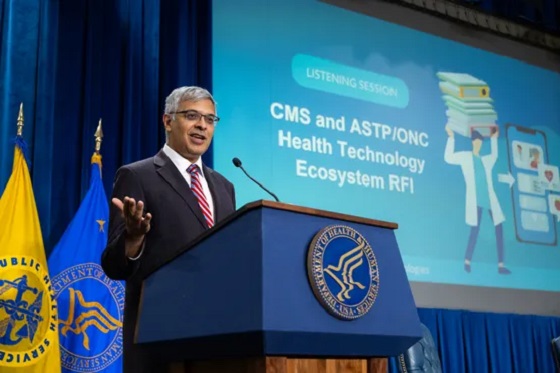
Quick Hit:
The Trump administration has launched a sweeping national security investigation into foreign scientists working in U.S. research institutions, targeting those from adversarial countries like China amid fears of espionage and biological threats.
Key Details:
- The probe targets as many as 1,000 foreign scientists inside the NIH alone, focusing heavily on Chinese nationals.
- Intelligence agencies are involved following multiple arrests of Chinese researchers attempting to smuggle dangerous pathogens into the U.S.
- The effort comes after repeated GAO warnings and revelations from a Chinese defector who says Beijing embeds agents in American labs.
Diving Deeper:
The Trump Administration has launched an intensive, behind-the-scenes investigation into hundreds of foreign scientists working in American research institutions—many of them tied to China’s communist regime. According to officials, the review began weeks ago and involves coordination with intelligence and security agencies.
The sweeping audit—prompted by longstanding concerns of foreign influence, espionage, and theft of intellectual property—has zeroed in on nearly 1,000 researchers within the National Institutes of Health (NIH) alone. Most are believed to have gained entry to the U.S. with help from federal research agencies during prior administrations, often without proper vetting.
“The Trump administration is committed to safeguarding America’s national and economic security,” White House spokesman Kush Desai told Just the News. “Taxpayer dollars should not and cannot fund foreign espionage against America’s industrial base and research apparatus.”
That warning is no longer hypothetical. In just the last month, federal officials say three Chinese scientists were arrested attempting to smuggle deadly pathogens into the U.S., including toxic fungi and crop-destroying roundworms—raising fresh fears of agroterrorism.
According to Dr. Li-Meng Yan, a Chinese virologist who defected to the U.S. in 2020, many scientists entering the U.S. from China are effectively agents of the Chinese Communist Party. “They have signed the contract with Chinese government to go back to China, serve for China with whatever they can get from the U.S.,” Yan said. “They become the CCPs’ kind of agents… like the parasites that go into your body.”
Years of inaction from federal agencies are partly to blame. The Government Accountability Office (GAO) has issued more than a half-dozen scathing reports warning that the NIH and partnering universities lack the safeguards to prevent foreign theft of research and influence over scientific projects funded by U.S. taxpayers.
In one 2021 report, GAO bluntly stated that “U.S. research may be subject to undue foreign influence” and cited the NIH’s failure to enforce conflict-of-interest policies, particularly with scientists tied to China.
The crackdown now underway comes amid a surge of related criminal activity. In one case, Chinese scientist Hao Zhang was convicted in 2020 for a scheme dating back to 2006 to steal proprietary semiconductor technology and launch a competing business in China. In another, a cybersecurity professor at Indiana University, Xiaofeng Wang, had his home raided by the FBI earlier this year and was quietly fired, though he has not been charged with any crime.
As part of the broader clampdown, the NIH recently issued new guidance barring researchers from funneling U.S. tax dollars to foreign partners through sub-grants. And the FDA has now halted all trials that export Americans’ cells to labs in hostile nations for genetic engineering—an issue of growing concern.
Congressional allies are backing the administration’s effort, with Rep. Nathaniel Moran (R-Texas) calling for sweeping reforms. “We’ve got to strengthen our own systems from within,” Moran said, “and we’ve got to push back in the trade world, in the tariff world and in the business practices world against China.”
With growing evidence of coordinated foreign espionage and exploitation of U.S. research systems, the administration’s covert operation marks a critical step in defending national security—and could reshape how America handles scientific collaboration for years to come.
-

 Opinion1 day ago
Opinion1 day agoBlind to the Left: Canada’s Counter-Extremism Failure Leaves Neo-Marxist and Islamist Threats Unchecked
-
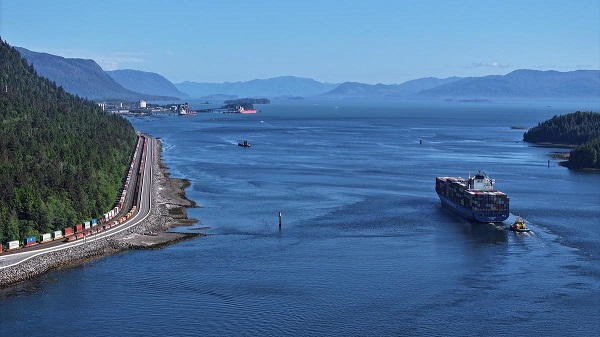
 Business2 days ago
Business2 days agoWhy it’s time to repeal the oil tanker ban on B.C.’s north coast
-
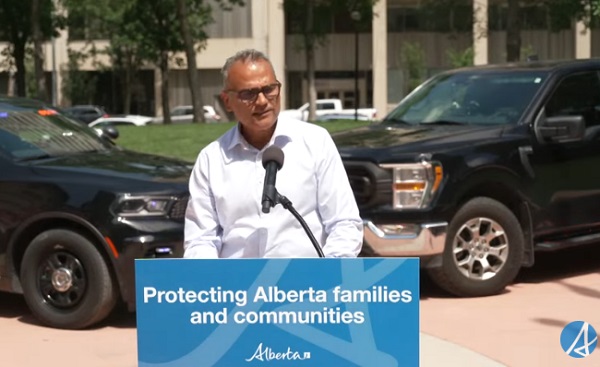
 Alberta1 day ago
Alberta1 day agoAlberta Provincial Police – New chief of Independent Agency Police Service
-

 Alberta2 days ago
Alberta2 days agoPierre Poilievre – Per Capita, Hardisty, Alberta Is the Most Important Little Town In Canada
-

 Agriculture10 hours ago
Agriculture10 hours agoCanada’s supply management system is failing consumers
-
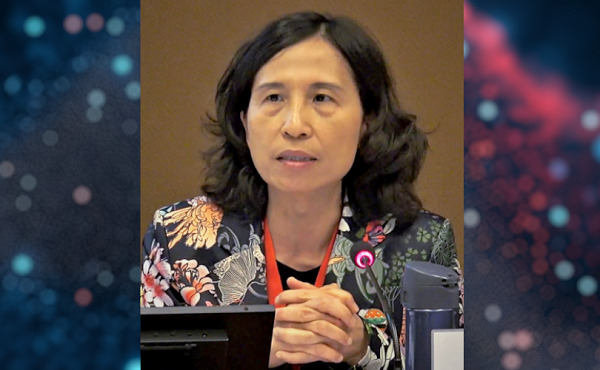
 COVID-191 day ago
COVID-191 day agoTop COVID doctor given one of Canada’s highest honors
-
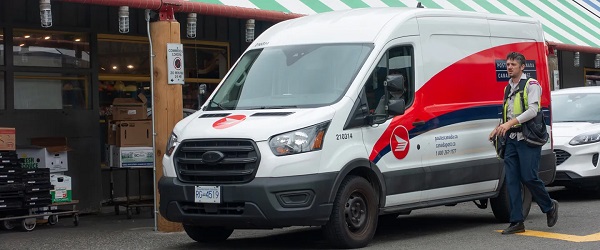
 Business2 days ago
Business2 days agoLatest shakedown attempt by Canada Post underscores need for privatization
-

 MxM News2 days ago
MxM News2 days agoUPenn strips Lia Thomas of women’s swimming titles after Title IX investigation

